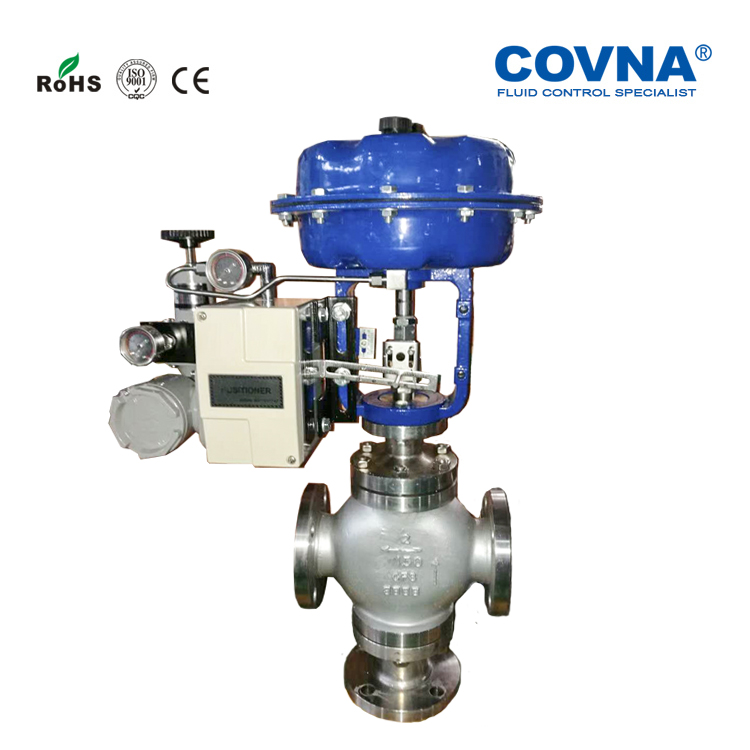Pneumatic film three-way control valve can be divided into two modes of action: converging and splitting. The spool structure adopts a cylindrical thin-walled window and is guided by the side of the spool. In some cases, it can replace two two-way valves and a three-way connection. But it is widely used, and it is often used for two fluid distribution adjustments in heat exchangers, and can also be used for simple ratio adjustment.

Pneumatic membrane three-way regulating valve is suitable for passing a fluid through a three-way valve and splitting it out in two ways or combining two fluids through a three-way valve into one fluid working condition. It is widely used for precise control of gas, liquid, steam, etc. The process parameters of the medium such as pressure, flow, temperature, liquid level and other parameters are kept at a given value.
The pneumatic film three-way regulating valve adopts an electric-pneumatic valve positioner, which is powered by electric signals and compressed air, and receives 0-10mA DC or 4-20mA DC current signals input by the control system. The compressed air is converted into air by the regulator. Source pressure signal input and output can realize split-range control (segment amplitude signal), thereby changing the opening displacement of the spool and achieving precise adjustment and control of the process parameters of the fluid medium.
The position of the confluence regulating valve and the diversion regulating spool are different. The spool of the confluence regulating valve is located in the two valve seats, and the spool of the diverter valve is located outside the two valve seats. This design of the spool can make the flow direction of the In the open state, the confluence regulating valve can operate stably.

PDF Get-a-Product Catalogue